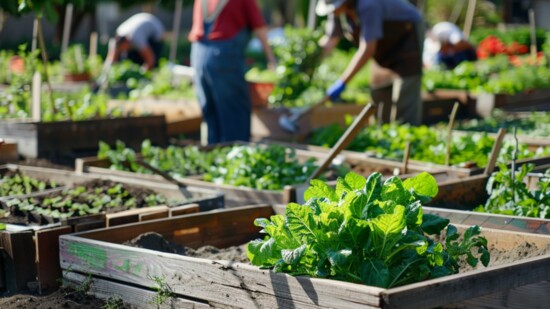With the internet on everything from our phones to our refrigerators, we are constantly inundated with information and notifications. We all know we need to slow down, but what does that mean exactly, and where does one start?
For me, it started with food. When I was in college, I joined a Co-op where my housemates and I established weekly meal plans, chore structures, and house meetings to manage our responsibilities. We became curious about food sustainability and buying local, so we connected with an organization that worked with farms in the area to sell and deliver their goods online. It got us all thinking: Where does our food come from? We adjusted our meals to highlight what was available locally. It forced us to get creative, appreciate our options, and treat them well.
“Quite frankly, we have lost most of the connections that we have to our food sources,” says Lisa Monachelli, Director of Education at Heckscher Farm. “We go to the grocery store to get our food and don’t really think much about the hows and whys of growing it and where it came from. [...] Creating a reconnection with our food sources is vital for educating consumers and to support the wonderful local agriculture in our backyards.”
At the Stamford Museum and Nature Center, Heckscher Farm has been giving the Stamford community a place to “relax and enjoy a slower pace of life” since 1955. With its 10 acres of active farmland, the farm has ample educational opportunities for people of all ages to get closer to local food production.
“Even if people can replace some products with locally-grown, it makes a huge difference to the local farmers and producers, as well as the environment,” says Monachelli. “For instance, grocery store garlic very often travels all the way from China. Connecticut farmers grow many different types of amazing garlic that doesn’t have to travel so far.”
What I learned at the Co-op was simple yet revelatory. We became a community built on trust, shared responsibility, and care. While we worked together, we weren’t doomscrolling or worrying (too much) about our schoolwork or the news. I was focused on things with real, immediate impact on my life and the lives of others. None of it made me feel overbooked; it actually slowed down my life. It was a brush
with an ancient, long-forgotten truth: food and community is everything and, indeed, worth our time.
Local food initiatives have always been about more than just growing healthy food. “There are very few things that people connect with more than food,” says Peter Novajosky, Farm Manager at Stamford’s Fairgate Farm. “Food culture, the memories and emotional attachments to foods, the seasonality of waiting for summer tomatoes or the first asparagus to come out of the ground in spring, and the flavor and satisfaction that can’t be matched by anything you can buy at a grocery store... these
are life-changing things when you learn to appreciate them.”
Fairgate Farm is a nonprofit with a mission to increase access to delicious, nutritious, local food for the Stamford community. They offer volunteer and educational opportunities for individuals, schools, and other organizations.
“Supporting local food initiatives builds community, increases food security for yourself and your neighbors, and strengthens your local economy,” says Novajosky.
We all have the power, right now, to slow down and invest more time in ourselves, our food, and our communities.
Spread the word, start your own garden, or volunteer at a local farm,” suggests Novajosky. “Food needs to be grown but it also needs to prepared, cooked, distributed, rescued, donated, composted, etc. There are so many ways to take part in your local food system.”
“There are very few things that people connect with more than food.”
~ Peter Novajosky, Fairgate Farm
